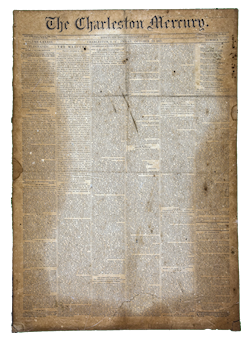June 1, 1863, The New York Herald
THE BOMBARDMENT OF VICKSBURG.
Correspondence of Mr. A.H. Bodman.
NEAR VICKSBURG, May 22, 1863.
AROUND THE REBEL WORKS.
This is the fourth day the army of General Grant has lain around the intrenchments of Vicksburg. Within that time there have been daily battles and continual cannonade. At least two thousand of our soldiers have been placed hors de combat, killed and wounded, in the several charges ordered against the earthworks.
A BOMBARDMENT ORDERED AND CARRIED OUT.
It was rumored yesterday that this morning General Grant would order a charge simultaneously along the entire line of works. Late in the evening the commanders of the different corps, divisions and brigades received their orders and prepared to execute them. The order contemplated a fierce cannonade from daylight until ten o’clock, but for some unexplained reason it was not opened until after eight.
During the night, however, the gunboats and mortars lying in front of Vicksburg kept up continual fire, and dropped their fiery messengers right and left without distinction.
THE CITY BUILDINGS FIRED.
During this bombardment several buildings were set on fire by the exploding shells, and lighted up the darkness, revealing strange shapes and wonderful outlines standing out in relief against the dark sky, which added wonderful interest to the bombardment as witnessed by the distant observer. It is impossible to estimate the damage occasioned by thus dropping into Vicksburg these heavy eleven and thirteen inch shells. Imagination falls far short of its reality.
WHERE THE WOMEN AND CHILDREN OF VICKSBURG ARE.
Before we approached the city the General Commanding ordered all the women and children for miles around Vicksburg to come within the intrenchments, assuring them that in that way they would escape all danger. The consequence is that there are a large number of non-combatants in Vicksburg, exposed to all the dangers of siege and bombardment.
THE ARMY OPENS FIRE.
At eight o’clock this morning, according to programme, the cannonading began, and continued with scarcely a moment intermission, along the entire line until ten o’clock. From every hill top in front of the enemy’s works cannon were placed, and the fiery tempest raged fearfully. Guns were dismounted, embrasures torn out, parapets destroyed, and caissons exploded. It was a fearful demonstration. The enemy were powerless to reply; for our line of skirmishers were pushed up close to the enemies works, and unerringly picked off the gunners whenever they attempted to work the guns.
THE STARS AND STRIPES PLANTED BEFORE THE WORKS.
For two long hours did this cannonade, continue, when on the left, in Smith, Carr’s and Osterhaus’ divisions, a charge was made. Winding through the valleys, clambering over the hills everywhere subjected to a murderous, enfilading and cross fire, they pressed up close to the rebel works to find that a deep ditch, protected by sharp stakes along the outer edge, lay between them and the intrenchments. They planted their flag directly before the fort, and crouched down behind the embankment, out of range of the rebel fire as calmly as possible, to await developments. The soldiers within the fort could not raise above the parapet to fire at them, for if they did a hundred bullets came whizzing through the air and the adventurers died.
A SHELL ROLLED DOWN THE HILL.
They adopted another plan. Taking a shell, they cut the fuse close off, lighted it and rolled it over the outer slope of the embankment.
HOW THE FORTS WERE TAKEN – OUR LOSES.
Subsequently, with picks and shovels, a way was dug into one fort, and through the breach, the boys walked bravely in. The first fort on the left of the railroad was stormed by a portion of General Carr’s division, and gallantly taken. Colonel Stone, of the Twenty-second Iowa, led the charge, and was wounded.
On the centre the fire was persistent and terrible. Many brave officers were killed and many wounded. Col. Dollins, of the eighty-first Illinois, fell dead while leading his men to the charge.
Later in the afternoon, General Ransom’s brigade charged the works opposite his position with heavy loss. Lieutenant Colonel Wright, of the Seventy-second Illinois, was wounded, and Colonel Nevins, of the Eleventh Illinois, and Colonel Humphrey, of the Ninety-fifth, were killed.
Steele and Tuttle, on the right, were heavily engaged, and the former is reported to have lost nearly a thousand men.
